Ladybugs are excellent natural predators that feed on common garden pests, and they are very beneficial.
They will help to keep the harmful insects from destroying your plants without much effort on your part.
This post is your complete guide to ladybugs and how they work to control pest populations, get rid of infestations, and restore balance to the ecosystem.
You’ll learn all about them, including their life cycle, feeding habits, why they are good for your garden, how to attract them, and much more.
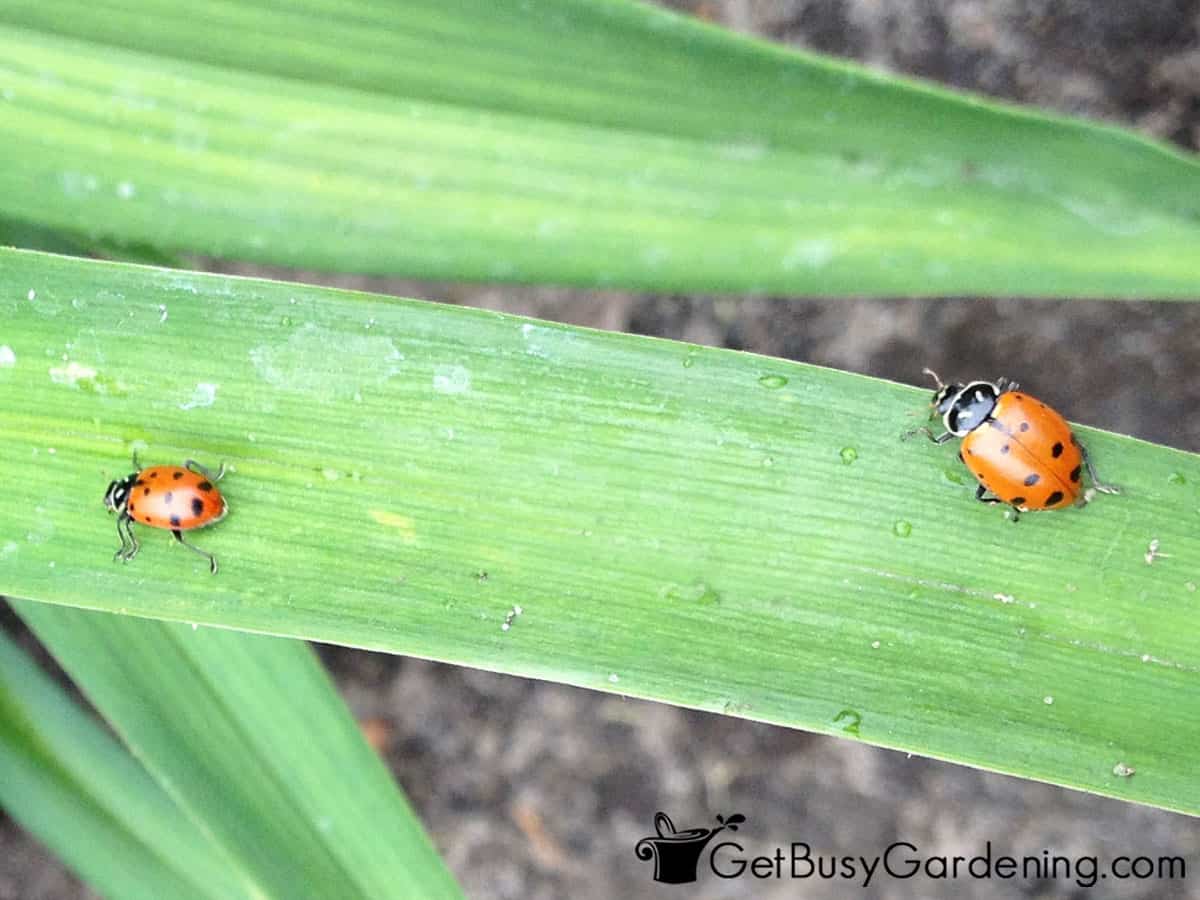
Facts About Ladybugs
Ladybugs (also called a Lady Beetle or Ladybird) live all across the world. There are more than 5,000 different types worldwide, with over 400 in North America.
Depending on the species, they can be red or orange with black spots, or black with red spots. Although we normally think of them as spotted, some do not have any spots on their backs.
They don’t have many enemies because of their hard outer shell and natural defense mechanisms. Their biggest predators are birds, wasps, spiders, dragonflies, and invasive lady beetles.
Related Post: How To Control Garden Pests Naturally
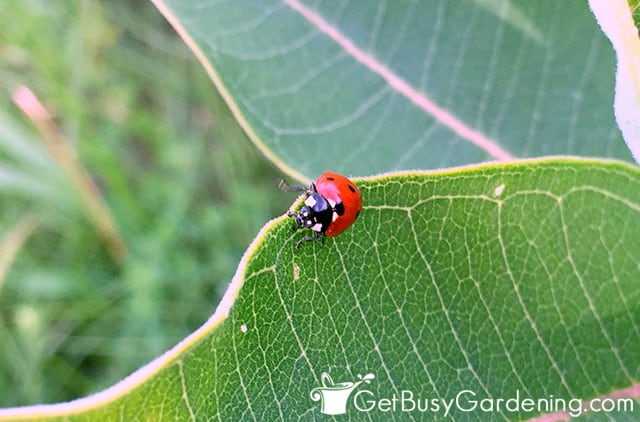
What Do They Eat?
Ladybugs eat destructive soft-bodied insect pests such as scale, mealybugs, aphids, thrips, whiteflies, and mites.
Sometimes they will feed on the eggs or larvae of other bugs as well. Both the larvae and adults are voracious eaters, consuming hundreds of pests a day, and rapidly cleaning out their prey.
They also feed on pollen, and can assist with pollination, but they don’t eat the leaves or any other parts of plants.
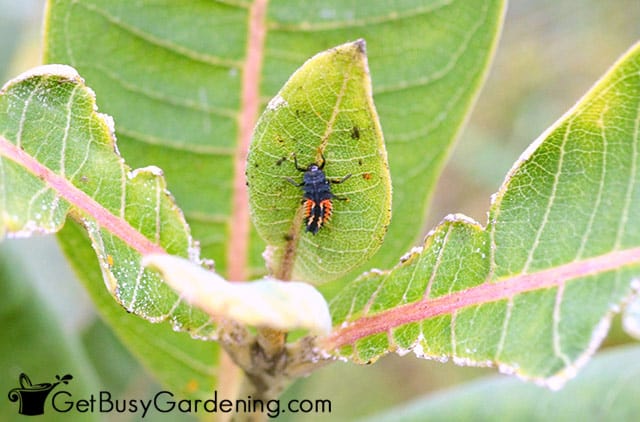
Ladybugs vs Asian Lady Beetles
Don’t mistake native ladybugs with those annoying and highly invasive Asian lady beetles. They look similar, but they are not the same.
They are from the same family, but Asian lady beetles are not a native species here in the U.S. Unfortunately, their population has exploded over the past decade, and they’ve become an extremely invasive pest.
To make it simple to ID them, Asian lady beetles are orange with black spots, and have a black “M” shaped mark on their heads. These pests also tend to bite humans and pests (though their bite is more annoying than painful).
You’ll find them clustering around buildings in the fall, and they often get inside the house. Native ladybugs do not do this.
So, if you’re trying to get rid of these invasive ones, please take great care to target only their population so you don’t harm your native ladybugs in the process.
Related Post: Facts About Ants In A Garden & Organic Control Tips
Ladybug Life Cycle
There are four main stages of a ladybug’s life cycle: egg, larvae, pupa, and adult. Adults overwinter in plant debris, and emerge in the spring to begin mating.
The females lay yellowish-colored, oval-shaped eggs in clusters on plants. They tend to lay them close to a food source, such as on a leaf that’s infested with their favorite prey, so the babies don’t have to go far to start feeding.
The eggs hatch in 3-4 days, and the larvae emerge. The larvae quickly grow to be about the same size as adults, but they look totally different. They resemble tiny alligators, with black scaly bodies that have orange or red spots on them.
The larvae spend their days feeding on as many bugs as possible for 10-14 days, and then they will pupate.
The pupa stage lasts for about a week, then the new adult ladybug emerges. Their total lifespan is about 1-2 years.
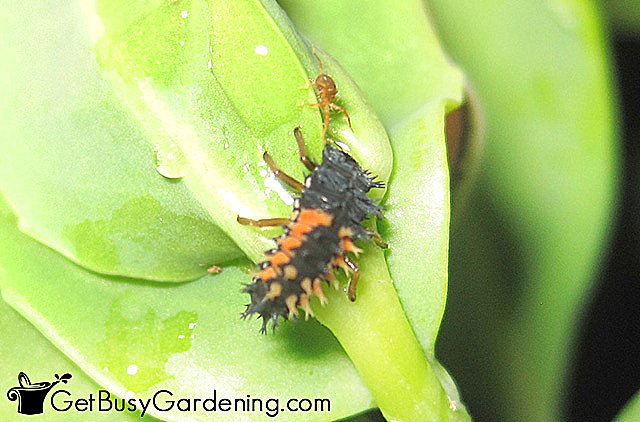
Using Ladybugs For Pest Control
Ladybugs help to get rid of destructive insect pests in your garden. That means less work for you, since you don’t have to fight the infestations yourself.
Of course you can’t force them to work for you. But, there are a few things you can do to enlist their help.
You can either make your garden ladybug-friendly, so it will naturally attract them. Or you could buy some, and release them yourself. As long as there’s food for them, they will stick around.
Attracting Them To Your Garden
The best way to attract ladybugs to your garden is to maintain a healthy environment that has an abundance of both bugs and pollen for them to feed on.
The easiest first step is to make sure there are plenty of pollen-filled flowers blooming at all times. They especially love herb blossoms, and single-petaled flowers that have a flat surface they can land on.
Providing a source of water is also important. You can either leave out shallow dishes for them, or just make sure you’re watering regularly.
Most importantly: never, never use chemical pesticides. These insecticides will kill ladybugs right along with the harmful pests, and that’s exactly opposite of what you want to do.
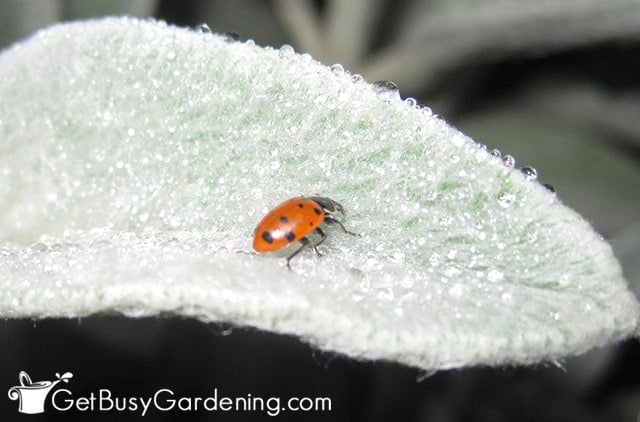
Releasing Them
A great way to increase the population of these beneficial bugs is to purchase and release them. Just be sure to buy a native species from a reputable dealer. Learn how to release ladybugs, step by step here.
However, you should only do this if you have a current pest infestation. Otherwise, if they don’t have ample food, they will only fly away.

FAQs
It is possible for ladybugs to bite, but it’s not very common for native species. If you’ve gotten bitten by one, it was probably the invasive Asian lady beetle. Those are known to bite both humans and pets, though it’s not super painful.
Native ladybugs are not pests, they are very beneficial. However, when a non-native species is introduced, they can become a pest (as with the Asian lady beetle in the U.S.).
For the most part, ladybugs do not eat plants. They are carnivorous, and mainly eat bugs, larvae, and eggs, but sometimes they’ll feed on pollen. However, it is possible for some species to snack on plants once in a while, but it’s rarely a problem.
Yes, having ladybugs is a sign of a healthy garden. These useful insects are great because they help to eliminate harmful bugs, and control pest populations.
Recommended Reading
- Attracting Native Pollinators
- Pollinator Friendly Gardening
- The Organic Gardener’s Handbook of Natural Pest and Disease Control
More About Garden Pest Control
- How To Control Flea Beetles In The Organic Garden
- 85+ Deer Resistant Plants For Your Garden
- How To Get Rid Of Slugs In The Garden Naturally
- How To Use Eggshells As Organic Pest Control
- How to Get Rid of Squash Borers Organically
Share your facts about ladybugs, or tips for how you attract them to your garden in the comments below.
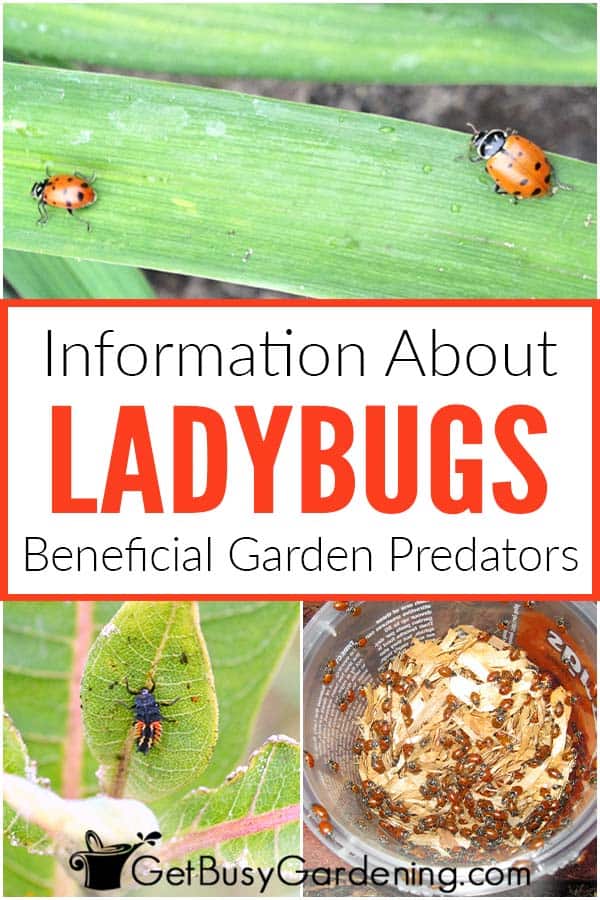
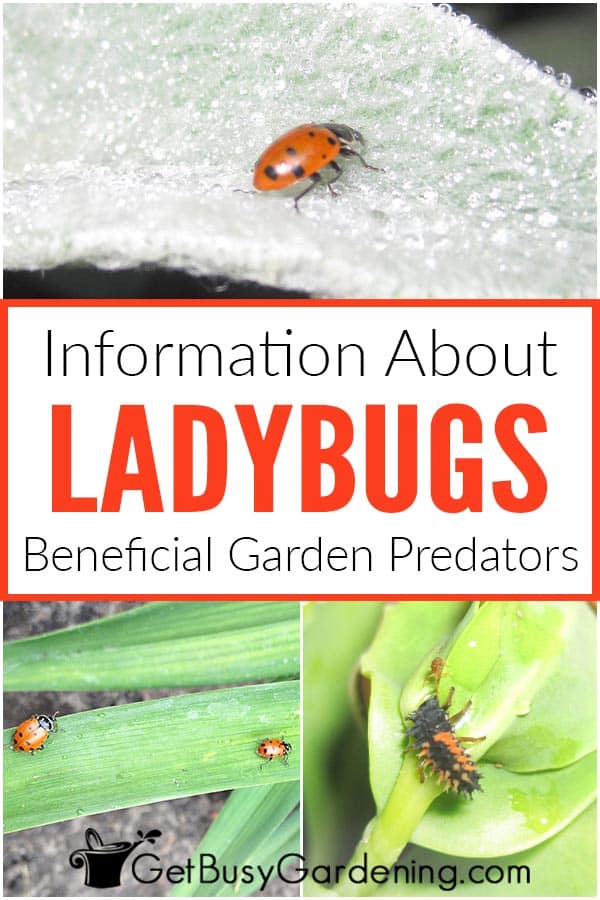
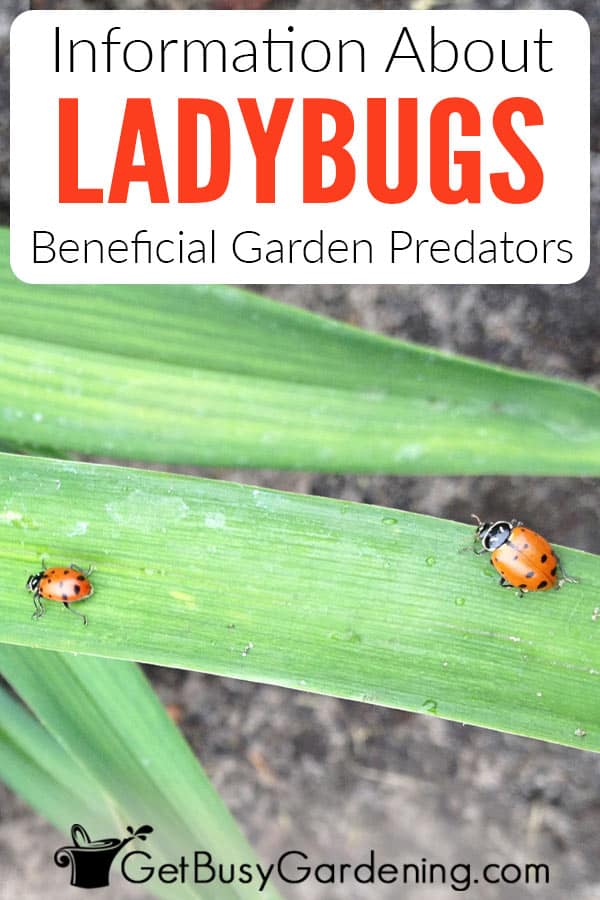


Courtney says
I’ve never considered buying ladybugs and releasing them in the garden, but I am definitely going to try that this year. Thanks!
Amy Andrychowicz says
Awesome, good luck with your lady bugs! 🙂
Angela Roberts says
Thank you for the ladybug tips! I have aphids on my plumeria trees and will pick some up from our local nursery today. I think my kids will have fun with this. 🙂
Amy Andrychowicz says
You’re welcome. Yes, it would be a fun thing for kids to help with!
Jawana Watson says
Loved reading this…very informative…now I just have to find some…
Amy Andrychowicz says
You’re welcome, and good luck! 🙂
Scented Leaf says
Great and very informative post … and you make me feel it … dozens of "voracious Ladybugs" around me … I can hear them: crunch, crunch, crunch.
Amy Andrychowicz says
Yes, ladybugs are voracious eaters. It’s a good thing we can’t actually hear them, LOL!